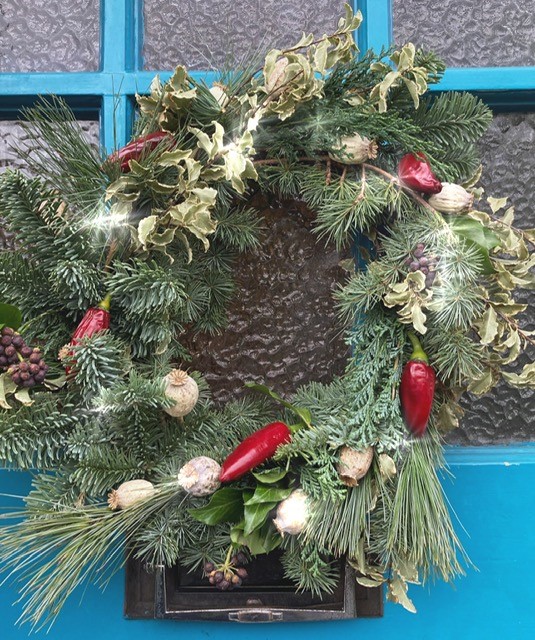
It is time to deck my halls and I have found myself foraging in the greenhouse for materials. Of course there are a couple of rules to the making of a wreath, and one of those is that the majority of it must be made of evergreens, and you wont find any of those in my greenhouse. Evergreens have been used to decorate our homes at midwinter ever since midwinter was celebrated, likely long before Christmas came along. They symbolise life, and the continuation of it, at a time when all around is bleak and bare. It is easy to convince yourself at the depths of winter that spring will never come, but evergreens assure you that they will, that life goes on, and the cycle of the seasons continues. And speaking of cycles it is thought that circular wreaths date back to the Roman midwinter festival of Saturnalia, and may symbolise the wheel of the year, again in reassurance that it is still turning, even at this most cold, dark and still of moments. So when you make your wreath and weave ring your bits of ivy and conifer around and into it, you are partaking in something very ancient indeed.
But a wreath isn’t all greenery, and evergreens are not the only plants that can symbolise the fact that life returns. I have added some poppy seed heads to my wreath, but then I also went furtling around in the greenhouse for something that would pass for berries, and found five as-yet-unharvested chillies. Chilli plants are perennial and we always bring a few indoors to overwinter in the warmth of the house, which puts them in a great position to leap back into life next spring. So they may not be holly but they definitely fit the bill. But more importantly they look beautiful. These are ‘Hungarian Black’, though they are actually a deep, shiny red, exactly the sort of colour a wreath needs.
Making a wreath isn’t difficult, you can even just string your strands of greenery into a circle, but it is made easier if you start off with a wreath ring. Some are made from a twiggy mass of vine stems that look pretty ornamental even unadorned, and for these you can just poke in bits of your chosen foliage. But mine was made of metal and so took a little more clothing. The first stage is to take your longest pieces and weave them in and out of the ring. Don’t worry at this stage how it looks: this really is to get as much coverage as you can and to bulk up the wreath and make it sturdier. Once you have threaded in lots of long pieces you should have a well-covered wreath with lots of parallel and closely laid stems that you can slide smaller pieces of foliage into. Take some shorter and more ornamental pieces of foliage – perhaps sprigs of holly or pieces of variegated euonymus, and slide them sideways into the ring, so that they are held fast by the other stems. Once you have the shape and coverage of greenery you want, you can start to add in the fancy bits, like berries, seed heads, dried orange rings, or even chillies. With the chillies in particular it is a good idea to wire them before you add them to the wreath, so that they are held securely. Take a length of florists’ wire or garden wire and push it through the stem of the chilli. Wrap the excess wire several times around the stem to secure the chilli, then push it into the wreath where you want it to sit, and fold over to secure. Your wreath will remind you that spring, sowing and growing will come again.


